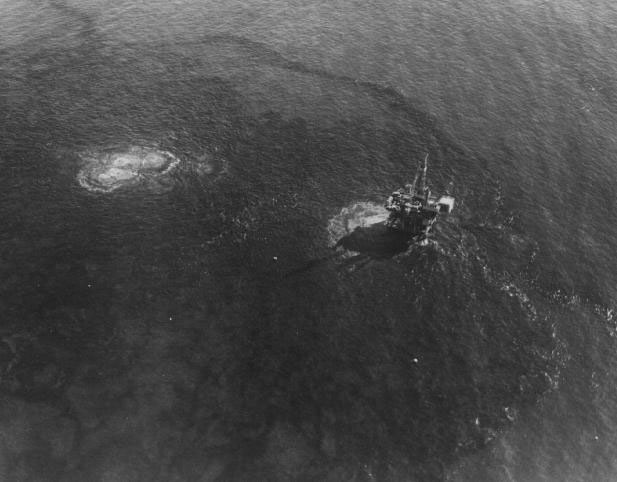“In 1969 the signs of . . . concern were everywhere,” writes John Quarles, EPA’s first deputy administrator, in the opening chapter of his invaluable memoir Cleaning Up America. These signs “were manifest in the outcry against the Santa Barbara oil spill,” which happened on January 28, 1969, just eight days after Richard Nixon’s ascent to the White House. There followed in close order a series of epochal events every month of that year. “Suddenly, in cities across the country, citizen environmentalists campaigned. . . . People were demanding a change in the old policy toward the nation’s resources.”
“The year 1969 was truly a watershed year,” agrees Daniel A. Vallero in his revealing book Paradigms Lost: Learning from Environmental Mistakes, Mishaps, and Misdeeds, beginning when “a major oil well off the coast of Santa Barbara, California, blew out, spilling almost a million liters of oil and depositing tar onto approximately 50 kilometers of beach.” It was a disaster of biblical proportions, a sea coast painted black, and “a significant impetus to the environmental movement.”
 The spill was definitely a result of human agency. Union Oil’s Platform A off the southern California coast was allowed to continue to pump crude by the U.S. Geological Survey, which “had given approval to operate the platform using casings that did not meet federal and California standards.” Oil platform workers struggled for 11 days to contain the surging spew of crude, as a slick 2,000 square kilometers in extent covered the ocean, much of it eventually washing up on the shore.
The spill was definitely a result of human agency. Union Oil’s Platform A off the southern California coast was allowed to continue to pump crude by the U.S. Geological Survey, which “had given approval to operate the platform using casings that did not meet federal and California standards.” Oil platform workers struggled for 11 days to contain the surging spew of crude, as a slick 2,000 square kilometers in extent covered the ocean, much of it eventually washing up on the shore.
Dolphins died by the score, their blowholes contaminated. Birds were coated with oil; desperate crews worked to clean them, making national headlines, but less than a third of the treated birds survived. Detergents used to disperse the oil from the sandy beaches proved toxic to wildlife, worsening the toll. But Union Oil President Fred Hartley was sanguine: “I don’t like to call it a disaster, because there has been no loss of human life. I am amazed at the publicity for the loss of a few birds.”
In Washington, President Nixon watched the media coverage. The oil spill had become the major news story nationally, as the three major networks flooded the zone with 50 reporters, and members of Congress arrived to demand action. The day after the slick washed ashore, Nixon announced a complete cessation of drilling in federal waters off the California coast.
The oil spill provided nightly news coverage, with the desperate volunteer crews struggling to save wildlife and to steam-clean their beaches. On March 21, the president signalled he had had enough — he visited the site of the spill. Nixon flew in a helicopter over the large extent of the slick. He then landed on the beach of Santa Barbara, where he held an impromptu meeting with local residents that was heavily covered by the press. “The Santa Barbara incident has frankly touched the conscience of the American people,” Nixon told the crowd, promising a federal response.
According to Quarles, Nixon’s response to the Santa Barbara oil spill was to kick off a White House anti-pollution campaign that would be popular with the public. The incident did not ultimately produce a nationwide drilling ban, nor did it even end oil rigs off the California coast. But it was the first use of the 1968 National Contingency Plan for hazardous releases, showing that a governmental response to industrial pollution could be welcome. And three years later Congress protected all the “waters of the United States,” including the near-shore oceans, in passing the Clean Water Act overwhelmingly over Nixon’s veto. Why the president turned against a law he largely spawned is another story.
This blog is adapted from a column that originally appeared in The Environmental Forum® (Jan.-Feb. 2019) and is reprinted with permission.
